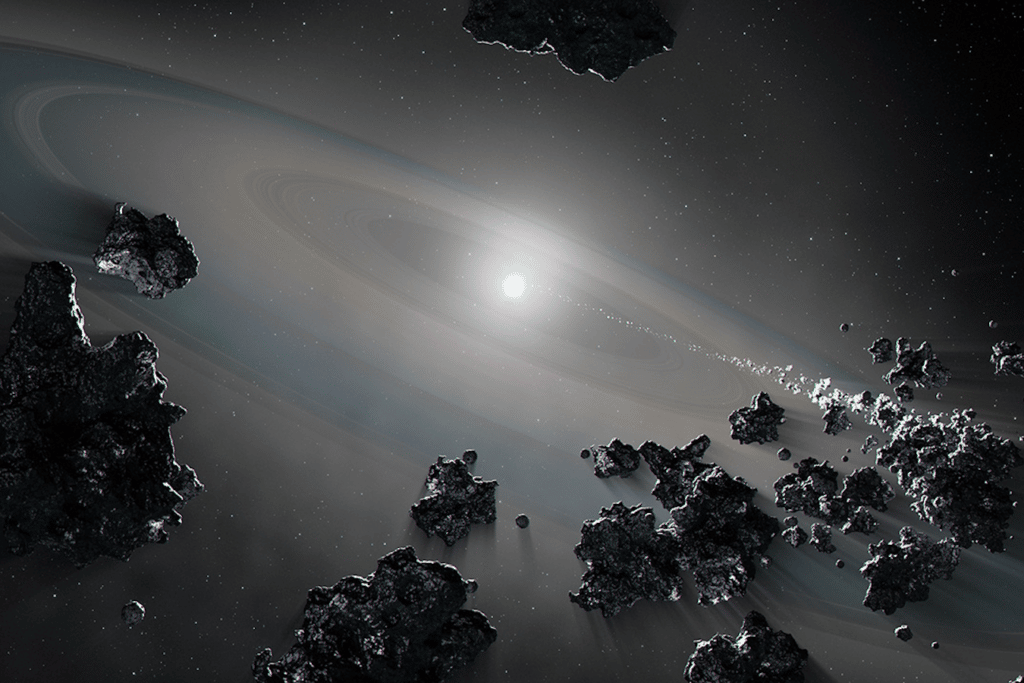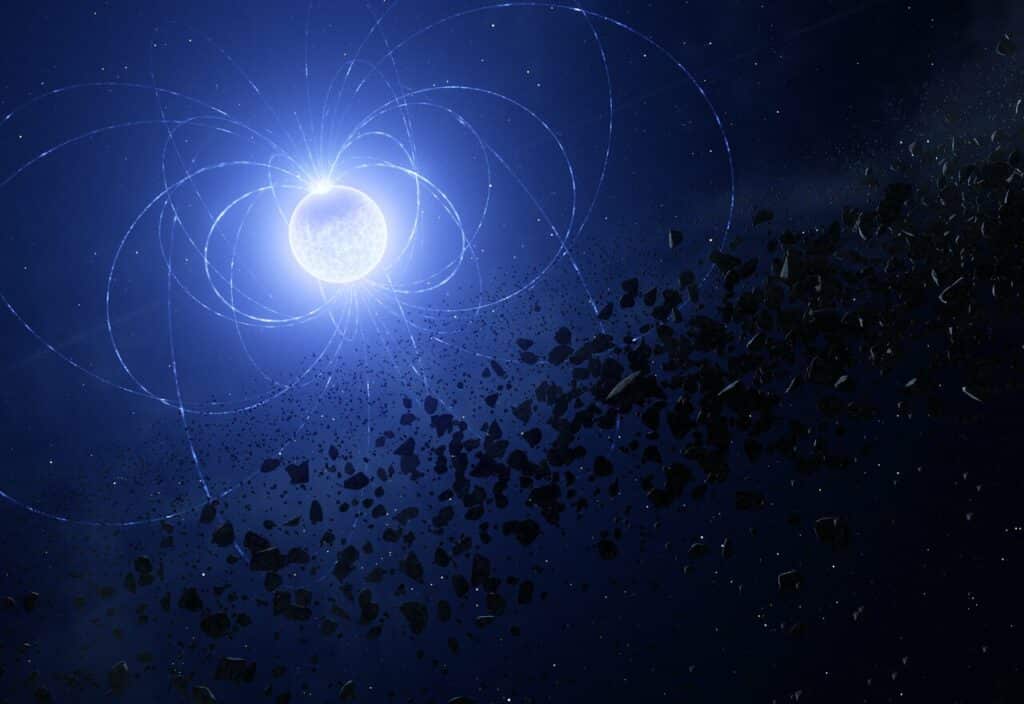An eye-opening “scar” has been discovered on a dying cannibalistic star. Why is this important? It provides new insights into the fate of white dwarf stars at the end of their life cycle.
The findings were made using the European Southern Observatory’s Very Large Telescope (ESO’s VLT) in Chile.
A white dwarf is what remains after a star similar to our Sun exhausts its fuel and collapses into a dense, Earth-sized core. This dense stellar remnant, known as WD 0816-310, bears evidence of having ingested planetary debris, leaving a distinct “scar” of heavy metals on its surface. This discovery offers a rare glimpse into the violent endgame of solar systems, including potentially our own.
“It is well known that some white dwarfs — slowly cooling embers of stars like our Sun — are cannibalizing pieces of their planetary systems. Now we have discovered that the star’s magnetic field plays a key role in this process, resulting in a scar on the white dwarf’s surface,” says study lead author Stefano Bagnulo, an astronomer at Armagh Observatory and Planetarium in Northern Ireland, in a media release.
The “scar” observed by the researchers is a concentration of metals that have been accreted onto the star’s surface. These metals, the study reveals, originate from a planetary fragment as large as, or possibly larger than, Vesta — the second-largest asteroid in our solar system. This revelation was made possible by the VLT’s sophisticated instruments, including FORS2, which allowed the team to detect the metallic scar and its connection to the star’s magnetic field.
What makes this discovery particularly fascinating is the uneven distribution of these metals across the star’s surface. Instead of being scattered evenly, they are concentrated in a specific area, indicating a direct influence from the white dwarf’s magnetic field. This area aligns with one of the star’s magnetic poles, suggesting that the magnetic field funnels and traps the metallic debris, creating the observed “scar.”

“Surprisingly, the material was not evenly mixed over the surface of the star, as predicted by theory. Instead, this scar is a concentrated patch of planetary material, held in place by the same magnetic field that has guided the infalling fragments,” says study co-author John Landstreet, a professor at Western University, Canada, who is also affiliated with the Armagh Observatory and Planetarium. “Nothing like this has been seen before.”
This research not only provides a window into the destructive processes following the life of stars like our Sun but also highlights the dynamic and sometimes violent interactions within dead planetary systems. By studying these “scars,” astronomers can gain valuable insights into the composition of exoplanets and the evolution of planetary systems.
The study is published in The Astrophysical Journal Letters.













